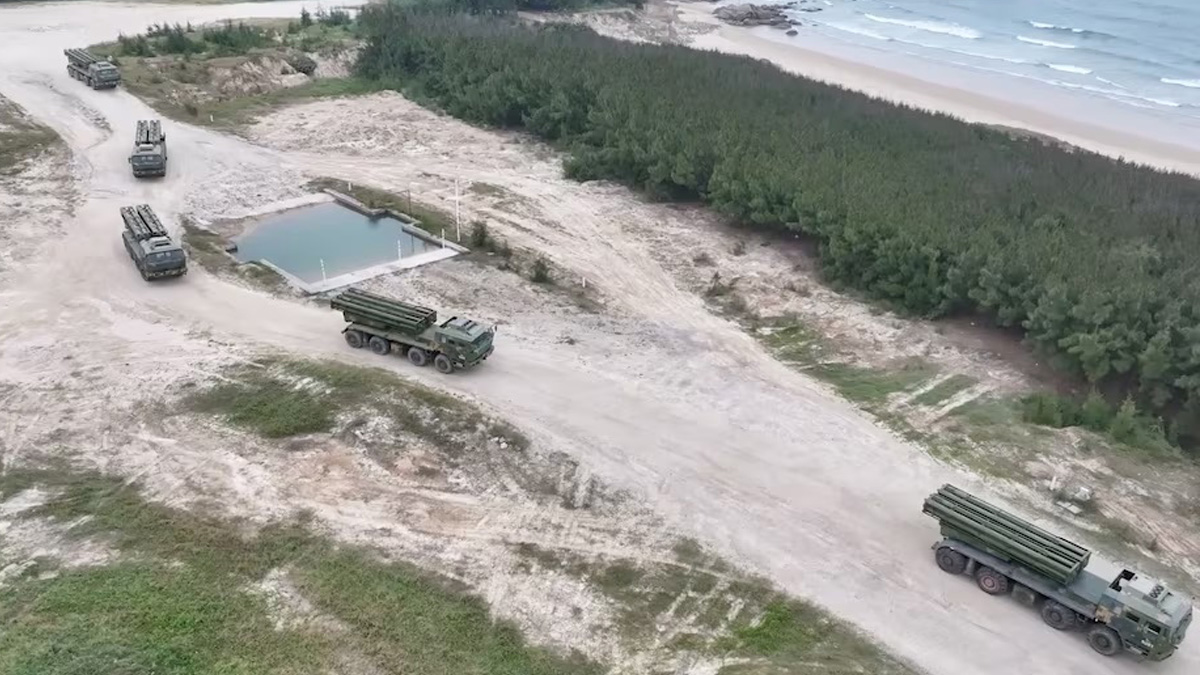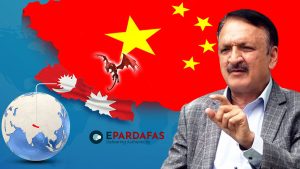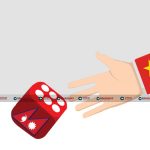
China Warns Taiwan with New Round of War Games, Drawing U.S. and Taiwan Condemnation

China conducted a series of military drills around Taiwan on Monday, warning against what it described as “separatist acts.” The exercises, which were shorter than previous ones but more intense, involved swift simulated attacks and the deployment of ships and aircraft. Taiwan and the United States condemned the war games, with Taiwan expressing concern over the growing threat.
While China’s military actions around Taiwan are not new, these drills had some notable features. Here’s a breakdown of the key elements and strategic intentions behind them:
Port Blockades
China’s military highlighted that part of the drills practiced a “key port blockade,” aimed at cutting off Taiwan’s access to essential imports, such as food and energy. This blockade was intended to showcase China’s ability to disrupt Taiwan’s supply lines, especially for energy resources like liquefied natural gas (LNG). Zhang Chi, a military expert at China’s National Defence University, noted that the drills demonstrate China’s capacity to pressure Taiwan’s economy by blocking energy imports.
Taiwan’s state-run energy company, CPC, reported that LNG imports were unaffected, dismissing rumors that the drills had disrupted shipments. However, analysts are closely monitoring these exercises as they could indicate China’s ability to isolate Taiwan in the lead-up to a potential full-scale invasion.
Closer Proximity to Taiwan
For the first time, China’s drill zones extended into Taiwan’s 24-mile contiguous zone, marking a more aggressive stance. The zones were closer to Taiwan than in previous exercises. Ma Chen-kun, a military expert at Taiwan’s National Defence University, explained that this proximity indicates China’s increasing pressure on Taiwan.
Coast Guard Involvement
China’s coast guard, now the largest in the world, played a more prominent role in Monday’s drills. The coast guard encircled Taiwan-controlled Matsu Islands and patrolled both sides of Taiwan’s mainland. Taiwan views this as part of China’s “grey zone” tactics, which aim to exert control over the Taiwan Strait without crossing into open warfare.
Collin Koh, from Singapore’s S. Rajaratnam School of International Studies, described the increased coast guard presence as unprecedented, signaling a potential new norm in China’s pressure on Taiwan. Taiwan is particularly wary of Chinese coast guard efforts to board civilian ships, which could escalate tensions.
Propaganda and Psychological Warfare
Alongside the drills, China ramped up its propaganda efforts, releasing military videos and animations. One of these caricatured Taiwan’s President Lai Ching-te with devil-like features, in a rare personal attack. Taiwan’s government referred to such actions as part of China’s “cognitive warfare,” aimed at undermining confidence in Taiwan’s military capabilities.
Infiltration Attempts
During the drills, Taiwan’s coast guard detained a Chinese national attempting to approach a heavily fortified Taiwan-controlled islet using a rubber boat. The incident raised concerns about China’s “grey zone” activities, where non-military tactics are used to provoke Taiwan without triggering open conflict.
Conclusion
China’s latest military exercises have raised alarm in both Taiwan and the U.S., with heightened concerns over the increasing intensity and proximity of the drills. While Taiwan’s economy and military remain intact, China’s actions signal a growing threat, as it continues to exert pressure on Taiwan’s sovereignty.
- Light Rainfall Forecasted in Koshi and Gandaki Regions Today
- Nepal’s Trade Deficit Surpasses Rs 460 Billion in First Four Months of Fiscal Year
- Indian Army Chief General Upendra Dwivedi Visits Muktinath Temple and Nepal Army’s Western Division Headquarters
- Indian Army Chief Visits Pokhara, Honors Gorkha Veterans and Gallantry Awardees












Comments